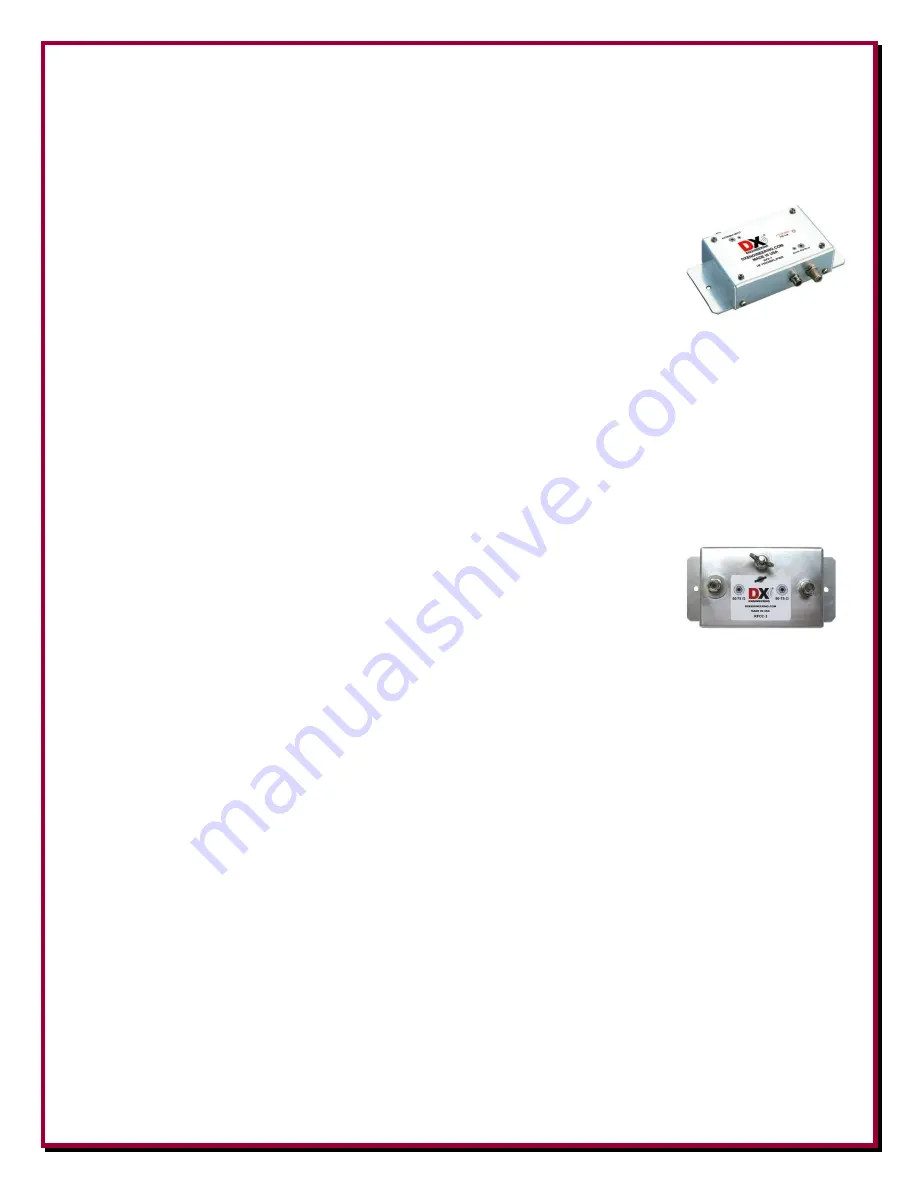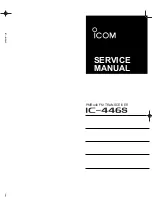
33
Optional Items
DXE-RPA-1 - Receiver Preamplifier, 0.3-35 MHz
This is the best HF low noise amplifier available. The RPA-1 is optimized for 0.3-35 MHz operating range. The push-pull amplifier
design and robust components enable it to withstand high signal levels and operate when you need it most. The dynamic range of the
RPA-1 is better than most receivers.
The RPA-1 is suitable for indoor or outdoor installation, with the option of being powered through the
coaxial feed. The metal housing provides shielding and improved lifespan. The unit uses RCA type
phono jack and CATV F connector for the input and output connections, and has a relay that
automatically bypasses the amplifier when dc power is removed.
Benefits:
Push-pull operation eliminates harmonic distortion
High quiescent current increases ability to handle strong signals without distortion or overload
Meticulous craftsmanship and durable components provide superior dynamic range
RCA type phono jack and type F connector ease installation
Simplified switching - automatic bypass eliminates gain when dc power is off
10-18 Vdc power using power connector or through the coaxial cable
10-18 Vdc through coaxial cable enables remote operation at antenna
DXE-RFCC-1 - Receive Feedline Current Choke, 50 to 75 Ω 300 kHz to 30 MHz
If you wish to reduce feedline radiation and improve reception, a Feedline Current Choke is recommended if your SWR is already
low. Adding a DX Engineering Feedline Current Choke at the point where the feedline exits the area of the antenna will substantially
reduce unwanted feedline radiation or reception without the need for improved station grounding.
The advantages of using an FCC
:
Prevents unwanted RFI by eliminating feedline current and radiation
All power goes to the antenna, improving efficiency
Reduces noise or unwanted signals picked-up by the feedline
Overcome a less than optimal ground system
The DX Engineering RFCC-1 receive feedline common-mode choke is the most effective solution to common-mode noise or
unwanted signal ingress available to date.
The DX Engineering RFCC provides thousands of ohms isolation between the input and output coaxial shield connections while
passing desired signals, including dc or low frequency ac control signals. The RFCC has extremely high isolation impedance which
effectively blocks common-mode noise or unwanted signals, even in the presence of very poor grounding.
Low noise receive antennas are traditionally located away from electrical wiring and other noise sources. Unfortunately, noise and
other unwanted signals have a direct path to your low-noise antenna through the feedline shield connections between the station
equipment and antenna.
Unwanted signals can also energize the outside of the feedline shield, and this undesired signal energy can be conducted directly to
the receiving antenna. This can reduce antenna directivity. Unless you have a perfect zero-resistance RF ground at the antenna, some
of the common-mode noise or unwanted signals from the feedline shield will make it into the antenna.
The RFCC is effective from 300 kHz to 30 MHz. It comes with standard CATV type “F” female connectors, although it can be used
in any 50 to 75 Ω receiving system. The RFCC is a passive device, therefore requires no power to operate.




































